The coldest months of the year are becoming the go-to time of year to chase trophy Murray Cod. It’s becoming ever more popular among anglers, more so than the summer months and many people are pushing through the cold and putting in the long hours to reap the rewards… and I can tell you the results are well and truly worth the effort.
The winter months in our large impoundments, lakes and dams is a proven time of year that has provided numerous anglers with incredible personal bests and trophy catches, myself included. I’ve caught more big fish in the heart of winter than at any other time of year.
In saying that it can be tough going and in this article I’m going to share 3 important tips to help give you the upper hand on your next trip.
But why winter… you may be asking?
Why does it have to be at the most freezing and uncomfortable time of year?
I’ll explain…
Related Article: This article is about winter cod in lakes and dams. For tips on targeting winter Murray Cod in rivers read this article.
Why do big Murray Cod feed more in winter?
Do they actually feed more? Or does it just seem like they do?
What we do know is that the activity of any ecosystem or environment slows down in cooler temperatures (e.g. hibernation of animal species, like bears). In the freshwater fishing world, we know that as the temperature drops, natives become less active… we get less hits, bites and don’t catch as many fish.
Well this isn’t the case with the larger fish… because they are so big, they need to continue to feed so they have enough energy to survive. They don’t feed anywhere near as much as they do in summer… but they still need to feed.
They feed less in winter than they do in summer – BUT they are easier to catch in winter? Still confused… I’ll explain.
In summer – the activity under the water is buzzing and there is food everywhere. All sized cod, even the larger ones are active and need to feed more than they do in winter. In saying this, there is a plethora of food around which means finding a meal is easy and effortless. If your lure happens to land on their nose, they will eat it because they are hungry… but they won’t travel too far for a feed.
On the flip side, in winter, there is very little food around, so these larger cod become more opportunistic, our lures become more appealing and the fish are willing to move away from their structure to chase down your offering.
This is what I believe happens under the water, but whatever the reason we do know… winter = BIG FISH!
Tip #1 – Best Areas to Target
This is no doubt one of the most important decisions you can make as an angler. Where you decide to fish can make a massive difference and as we already know, when it comes to Murray Cod you need to be close to structure!
These structure types include;
- Rocky banks and points
- Large fallen logs and timber
- Standing trees
- Drop off and ledges
- Gullies and creek beds
- Manmade structures (like dam walls)
But what is the best structure to fish during winter?
All of the above! They will all hold fish at this time of year, but some will fish better than others and it more comes down to ‘how you approach’ that specific piece of structure for winter.
Fishing Shallow – The important factor to remember in winter is to fish ‘shallow’. At this time of year the larger fish will move into the shallow areas to not only feed but to also find warmer water. The best depth to fish in winter is from 1-5m of water, and this goes for all of the above structure types.
Murray Cod (even though they can survive through the cold), much prefer warmer temperatures and this is why they move into the shallow regions in the lake. This is why one of the best areas to fish in winter (which I haven’t listed above) is shallow flooded banks.
Shallow Flooded Banks
These areas are prime areas to fish during the winter months as the water is usually rising due to winter rainfall. This rise causes banks to become freshly flooded, creating great feeding opportunities for small baitfish, which in turn draws in the cod to feed.
Many of these banks are covered in thick grass and weed which is the perfect feeding ground and even though there is little physical structure in the area, there is food which means feeding fish.
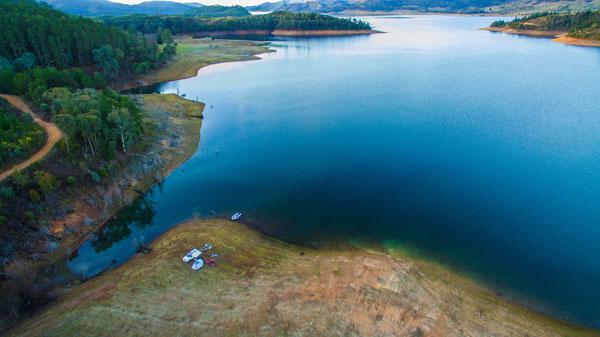
Prime example of shallow flooded banks during winter. The water is rising creating the perfect spots to fish.
TIP: Best Time, Depth and Technique
First light is the best time to fish these flooded banks as the cod will have moved into the shallows (sometimes less than a metre) to feed on baitfish throughout the night. First light is also a prime hunting time for these larger fish.
The best depth to fish is between 1-4m on these flat banks with lightly weighted lures like large soft plastics, swimbaits, spinnerbaits and even surface lures.
There are a range of techniques you can use for this style of fishing. One handy tip, when you are in very shallow (1-2m), don’t let your lure sink too far. It doesn’t need to be right on the bottom as its only shallow and when you hit the bottom the lure will usually pick up weed (when on grassy banks).
If you’re keen to see video demonstrations on how to work the types of structures listed above, it’s all available in the Complete Guide Series. Click here to see more.
Tip #2 – Retrieves
Now we have the structures and key areas covered, the next key tip for winter is your retrieve pattern. There are a range of different ways to retrieve your lure but the best part is, when it comes to winter… simple is best:
Slow Roll Retrieve
Slow in winter! Everything beneath the water is moving at a reduced pace so matching this is key. With anything we do in fishing we always want to ‘match the hatch’ and this even comes down to how we use the lure and the speed in which you retrieve.
How slow should I go? Basically as slow as you can while still imparting action into the lure. The lure still needs to be giving off plenty of action. If it’s a soft plastic, make sure the paddle tail is kicking side to side.
Pauses are Key
Another thing I have learnt over the years is the importance of ‘pausing your lure’. Why?
There are two reasons…
One, when using a lure that sinks like a spinnerbait or soft plastic we need to pause them during the retrieve to allow them to get back to the bottom.
The second reason, is more than half of the hits from big cod in dams come on the ‘pause’. When the lure is paused and free falling, to a fish it looks injured and therefore an easy meal. So many of our big cod captures have come either on the drop when casting or on a pause.
How long should I pause for? You only need to pause the lure for a couple of seconds, the fish that attack on the pause are usually following right behind the lure and as soon as it stop and begins to fall they will have a crack. If you’re pausing to get the lure back to the bottom though, obviously allow it to sink until you get a belly in your line which indicates it’s landed on the bottom.
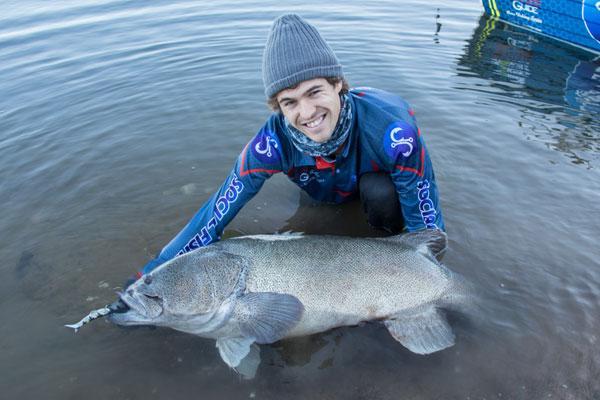
The author, Rhys Creed with a monster 122cm Murray Cod that was caught slow rolling the IGNITE Cod Fury soft plastic just after a long pause.
TIP: Alternative Retrieves
Sometimes… it doesn’t hurt to mix it up a little and impart some twitches or even a quick burn within your retrieve. This does work really well in the warmer months (especially in spring in those waterways that are open all year round), but is still worth using every now and then in the winter months.
Tip #3 – Big Lures – & Mix it up!
Winter is all about targeting metre plus Murray Cod! It’s about slow fishing, putting in the hard yards and chasing those bigger fish, and to catch big fish we need to use BIG LURES!
I do agree that small lures do catch big fish, but at this time of year a large cod will be more interested in a big meal over a small snack. So, what lures are best?
Soft Plastics –
These are my go to lure at this time of year, only because they are extremely realistic and usually during winter the clarity in most dams increases, therefore the fish will be feeding via both sight and vibration. Soft plastic not only look realistic, they have a very natural action.
Best Size: 160mm-220mm, jig head weight of ½ to 5/8oz
Rhys Favourite Brand: IGNITE Cod Fury 220mm
Surface Lures –
They are such an incredible lure for Murray Cod, especially in winter. Surface lures create the appearance of a large feed for a cod as they create an incredible commotion on the water’s surface. This noise intrigues cod to come up and take in what it thinks is an easy meal, even in the middle of winter.
Best Size: 150mm-250mm
Rhys Favourite Brand: Gobsmacked Leviathan and Cranknstein 175mm
Swimbaits –
These are incredibly realistic and work well on Murray Cod because of their fish like profile and swimming action. Again this is so important in clearer winter waters. The great thing about a swimbait is they can be fished extremely shallow and naturally across the shallow flats, as well as down deeper when needed.
Best Size: 160-200mm
Rhys Favourite Brand: AC Swimbait 200mm and Biovex Jointbait 176 (shallow), Bunji 8in (deep)
Related Article: If you want to learn more about the best lure style for Murray Cod I recommend ‘5 Best Lure Styles for Murray Cod’ article.
Note: there are certain times when the baitfish the cod are feeding on are small, so in this instance you want to match that food source.
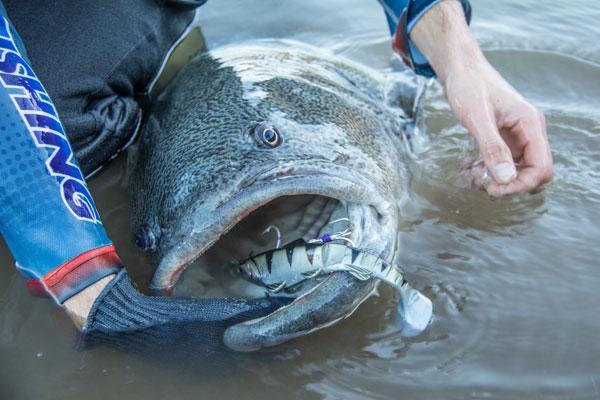
This giant cod inhaled the IGNITE Cod Fury 220mm in the Perch colour. These are perfect lures for fishing in the heart of winter.
TIP: Reduce Leader Size in the Day
I have found that if you reduce your leader thickness when fishing on clear sunny days, you’ll entice more hits. I drop to a 30lb fluorocarbon leader in these conditions and even though it’s light, when I do hook onto a fish I just play it easier than normal and most of the time you’ll be able to land the fish.
I’ve found that 50lb, being much thicker is enough to spook a fish in the day time. They are much smarter than we think and just changing something like your leader thickness makes a massive difference.
Bonus Tip – First Light is Key
I wanted to include this extra tip about fishing on first light! That short period between first light up until when direct sunlight hits the water is the prime time that you need to make the most of during winter.
The large cod will be in shallow and will be switched on and ready to feed, usually between about 6:30am-8am.
There is so much more I could talk about in this article but I wanted to keep it to the 3 most important things that I follow on every trip during winter. It’s by far one of the toughest times to fish, but by understanding ‘why big cod feed in winter’ and following those tips about: areas to fish, retrieves and the best lure options, you’ll be right in the zone on your next trip.
Rhys Creed
If you enjoyed this article you might also like: Top 4 Tips for Targeting Winter Murray Cod in Rivers

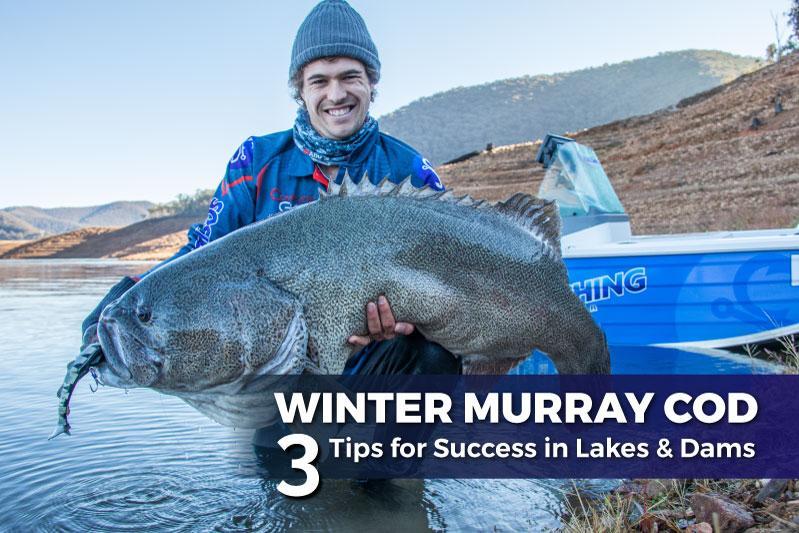
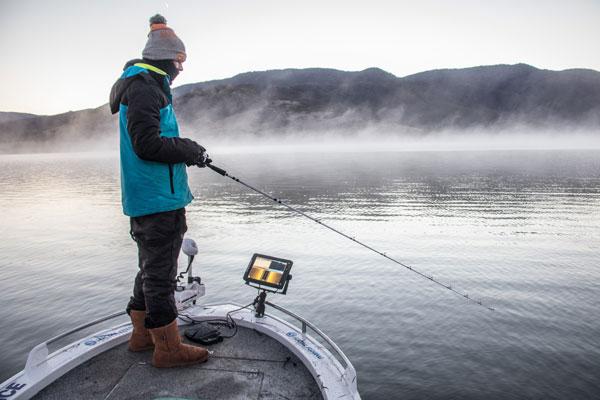
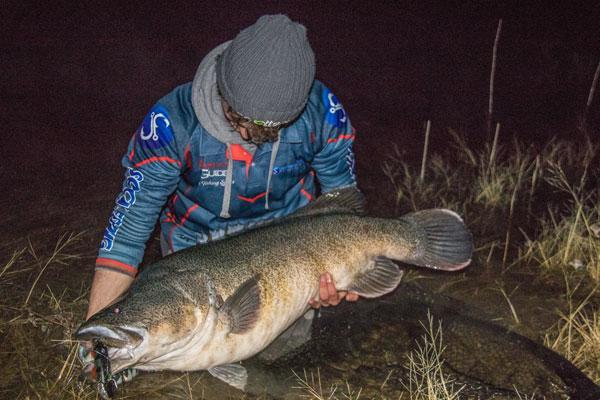
0 comments